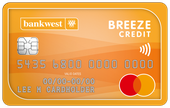- Differences between virtual credit cards and digital wallets.
- Finding the right virtual credit card to fit your needs.
- Financial institutions that provide virtual credit cards and digital wallets.
The use of virtual credit cards and digital wallets in Australia has soared, surpassing cash payments on in-store purchases.
Choosing the right virtual credit card or digital wallet for your needs can be determined by several factors: your credit history, financial status, and whether the card is for business or personal use.

Coming up next
What is a virtual credit card?
Virtual credit cards are digital versions of conventional credit cards and are accessible to those with a pre-approved line of credit. These virtual cards can be accessed from multiple digital devices, including:
- mobile phones;
- laptops;
- tablets;
- desktop computers.
Examples of Australian virtual credit cards

Highlights
- Use virtual card instantly once approved (typically within 60 mins)
- Tap n Pay with up to 55 days interest free
- Use credit to transfer money to anyone
- Exclusive features
- Thousands of 5-star customer reviews
Bank promo
Pros
Cons

Highlights
- Get 0% p.a. interest on balance transfers for 24 months, with a 3% balance transfer fee (then 12.99% p.a. thereafter).
- An annual fee of $49 p.a., making it an affordable option.
- Add up to 3 additional cardholders at no extra cost.
Pros
Cons

Highlights
- This card offers 0% interest, helping you save on interest costs.
- $0 fee if you have no outstanding balance; otherwise, a $10 monthly fee applies.
- Access Westpac Extras and Rewards for additional offers and perks.
Pros
Cons
How do virtual credit cards work?
Just like the physical credit cards we are all familiar with, virtual credit cards have their own unique, 16-digit numerical sequence, including a CCV code and an expiration date. They can be used online to make a purchase, pay a bill, or transfer funds. Additionally, they can be added to a digital wallet such as Apple Pay or Google Pay.
When a virtual credit card has been issued, it can be used immediately. This compares favourably to having to wait several days for a plastic card to arrive in the mail. Since details are stored online or in an app (depending on the issuer), the risk of your card being lost or stolen is reduced.
Most physical credit cards issued by banks in Australia can be added to digital wallets too.
Digital wallets vs virtual credit cards
A virtual credit card is added to a digital wallet such as Apple Pay or Google Pay. The virtual card can then be used to make purchases in physical or online stores where these digital wallets are supported. As well as virtual credit cards, debit cards, prepaid cards, and gift cards, digital wallets may also store loyalty program membership details, boarding passes, and photographic ID such as your driver's licence.
Pros and cons
When searching for a virtual credit card, whether for business or personal use, knowing the pros and cons is key to the decision-making process.
Pros
- Virtual credit cards provide access to your funds without the need for a physical card.
- Cards can be created online within seconds, allowing for instant payment options.
- You can earn points for purchases, travel incentives, and discounts for certain retailers just as you would with a traditional credit card.
- There are options for single-use virtual credit cards, meaning once the credit limit is reached, the card becomes void.
- It’s easy to cancel a card if it becomes compromised, and you can create a new card to start using immediately.
Cons
- Virtual credit cards can still get you into debt when used irresponsibly.
- Virtual credit cards are still susceptible to hacking and fraud.
- Returns can be complex with single-use virtual cards. Once the card is used, the details then expire, and you may not be able to return an item or receive a refund. The best way to avoid this is to create a virtual card using a pre-existing credit card or use a different purchase form for certain items.

